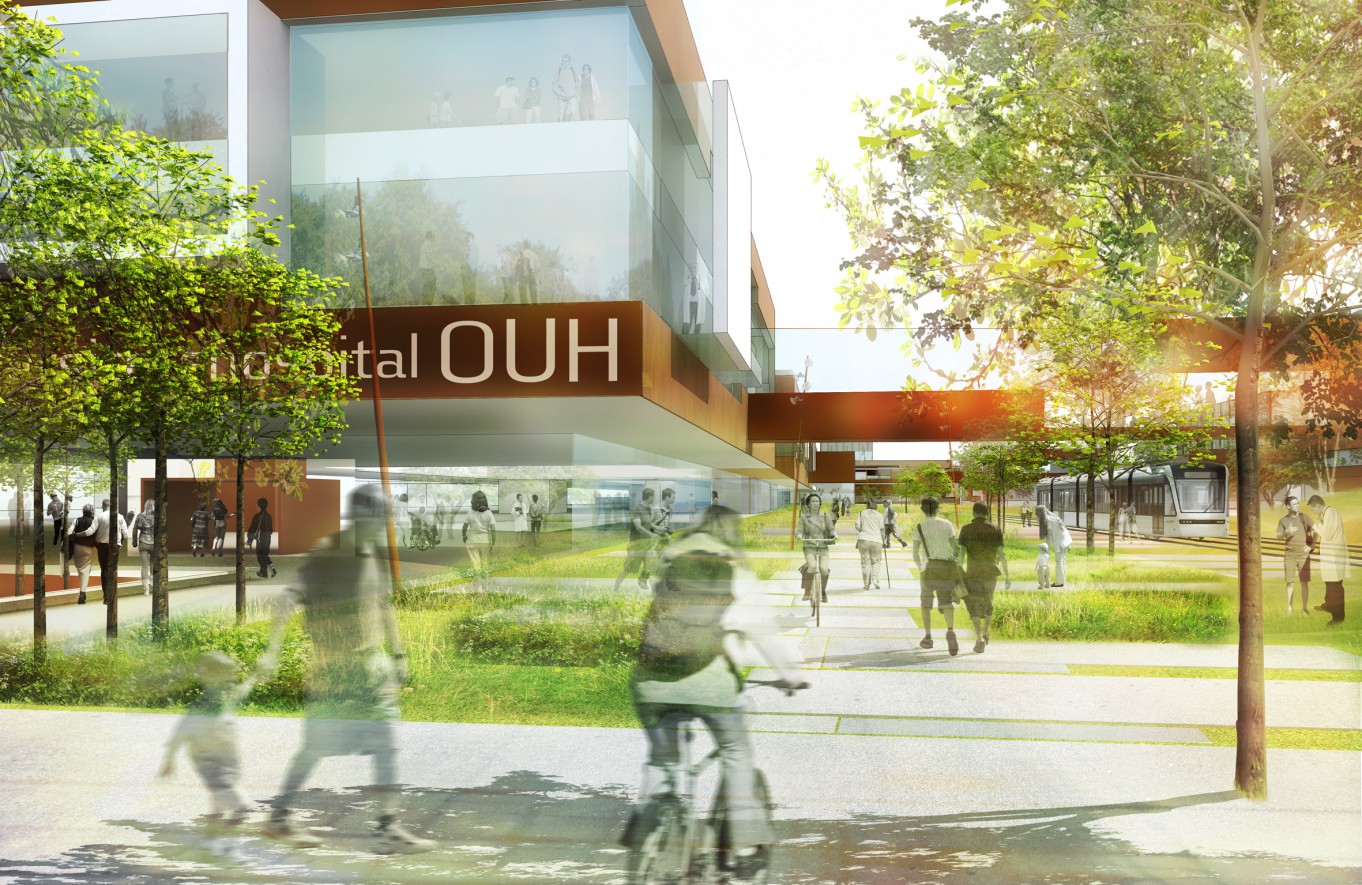More than 10 billion Euros will be spent on 16 new hospital construction projects in Denmark. One of the larger projects, dubbed a “super-hospital,” is in Odense, where the budget is 1.3 billion Euros. The New Odense University Hospital (Nyt OUH) will be approximately 250.000 m2 and is scheduled to be ready in 2022. It will become the largest hospital in Denmark that is built from scratch.
Budget
1.3 €billion
Floor area
250.000 m2
New OUH is a green-field mega-project which will replace the existing university hospital (OUH). So on one hand, it is a rare opportunity to architect a digital enterprise “ground-up”, regardless of the existing built-environment, but on the other hand, it is also a significant transition challenge for the existing enterprise.
The overall vision for New OUH is:
A university hospital is a highly technological and knowledge intensive enterprise that depends on knowledge being shared and used optimally in the primary production – treatment of patients and research. Knowledge in the hospital must flow freely inside the networks and between the relevant operators and must be available at any time and in such a fashion that it can be utilized immediately.
New OUHs governing bodies have established an overall vision for the digital hospital:
The Digital Hospital is a composite term consisting of the word Hospital. This represents the core service – diagnosing and treatment of patients and thus the circuit of knowledge while the Digital is a supporting and developmental term to the core service. The Digital element in New OUH must be omnipresent and must ensure that New OUH can realize its vision and make full and optimal use of the knowledge circuit. In other words, the Digital hospital is a precondition for the knowledge circuit in New OUH.
Digital solutions at New OUH will be for all, to all, between all, everywhere – always.
For all
Digital solutions must support all users of the hospital and its functions. Concurrently, the digital solutions will help convert data into information to the benefit of the sharing of knowledge, treatment, care and research. The digital solutions must support exchange of information/communication as well between the different users, and deliver to such an extent that they support proper communication between the parties and in a fashion making it relevant for the information seeker. When the term “all” is used it refers to patients, next of kin, hospital employees, GPs, municipality and scientific researchers at the university.
To all
Digital solutions for all are regarded as any productive process at New OUH is digitally supported. Data, information and knowledge flow freely and automatically to all people as well as systems, thus supporting the hospital processes in the best possible way and at any time providing the employees with the necessary knowledge needed to perform their tasks. “To all” constitutes a movement from one operator to (“all”) another operator. This movement rep-resents knowledge shared transparently and automatically. Data, information and knowledge thus flow to and between all productive operators and processes at the hospital.
Between all
Digital solutions between all tie individuals, work processes and solutions together in a holistically orientated network2. In other words, we are talking about coherent sharing of information and knowledge between all operators in a network. “Between all” is thus regarding the coherence and integration of concepts. The digital elements is seen as coherence and integration on three levels: between individuals, between equipment, and between equipment and individuals. The digital hospital must contribute to information and knowledge being made available in such a way that it can be integrated and utilized between all operators and network in and around the hospital’s technical and productive processes.
Everywhere
Digital solutions “over all” mean that the solutions must be available and integrated for all, in and around the hospital, patients as well as external partners. This availability “everywhere” facilitates communication, sharing and creation of knowledge. Therefore “Everywhere” must not be viewed as a (narrow hospital based) concept but as including all partners (patients, scientific researchers, municipalities etc.) “Everywhere” covers, in other words, the geographical and organizational areas that participate in or around a specific productive process offered by the hospital to a patient or a group of patients. “Everywhere” thus facilitates both and organizational perspective, a process related perspective, and a geographical perspective. This means that digital solutions “everywhere” must be an organizational part of the entire hospi-tal, support all productive processes in such a way that these can be utilized in the best possible way regardless of geographical location.
Always
Digital solutions must always be present and support the user at any given time to be able to procure the requested information – regardless of place and time. This means that the digital solutions support availability of information for the user at the time the information is requested. This means that during an operation the surgeon can pull vital information that the researcher has unlimited access to quality data in his field. That data is available regardless if the user is present at the hospital, the university or outside.
New OUH has chosen QualiWare’s digital business design platform for the ongoing architecture and design work on the digital enterprise. QualiWare is already used at the existing OUH for asset management in several clinical areas.
The New OUH enterprise architecture team will over the next 6 years need to flesh out actionable digital business design, and realize the digital hospital vision. QualiWare Center of Excellence will support the EA team in these efforts.
In future blogs, we will offer more updates and elaborations on the digital hospital.

